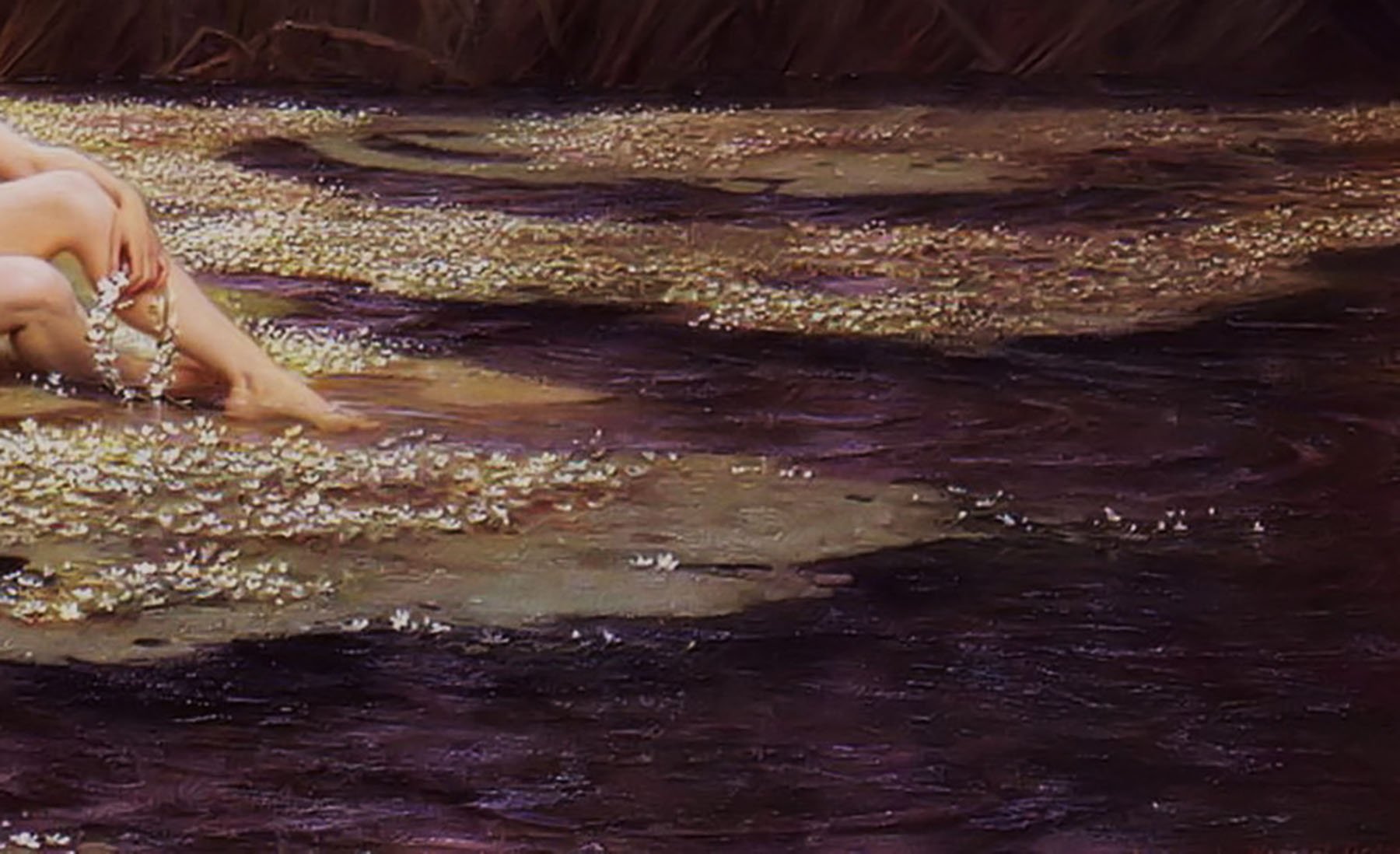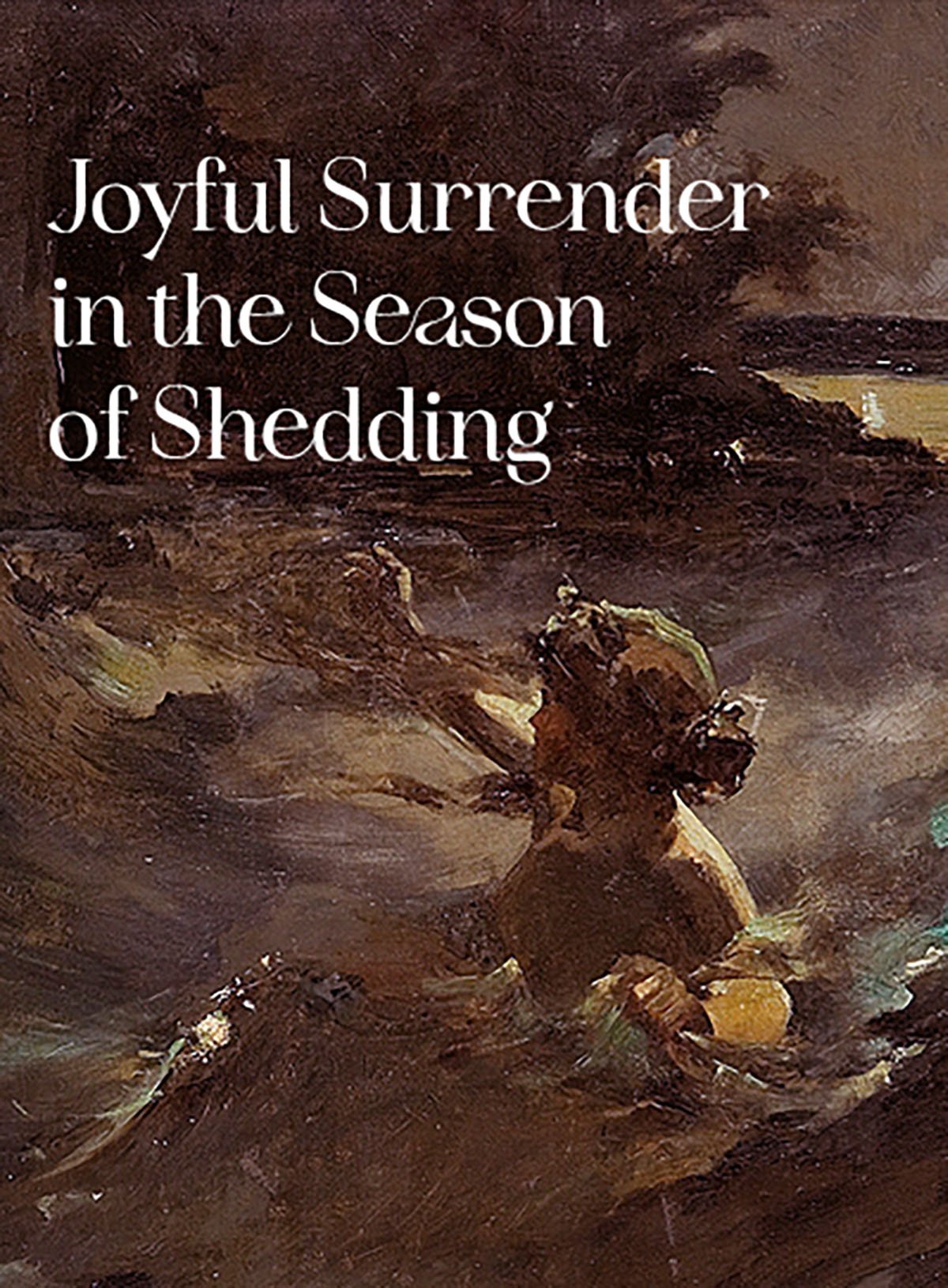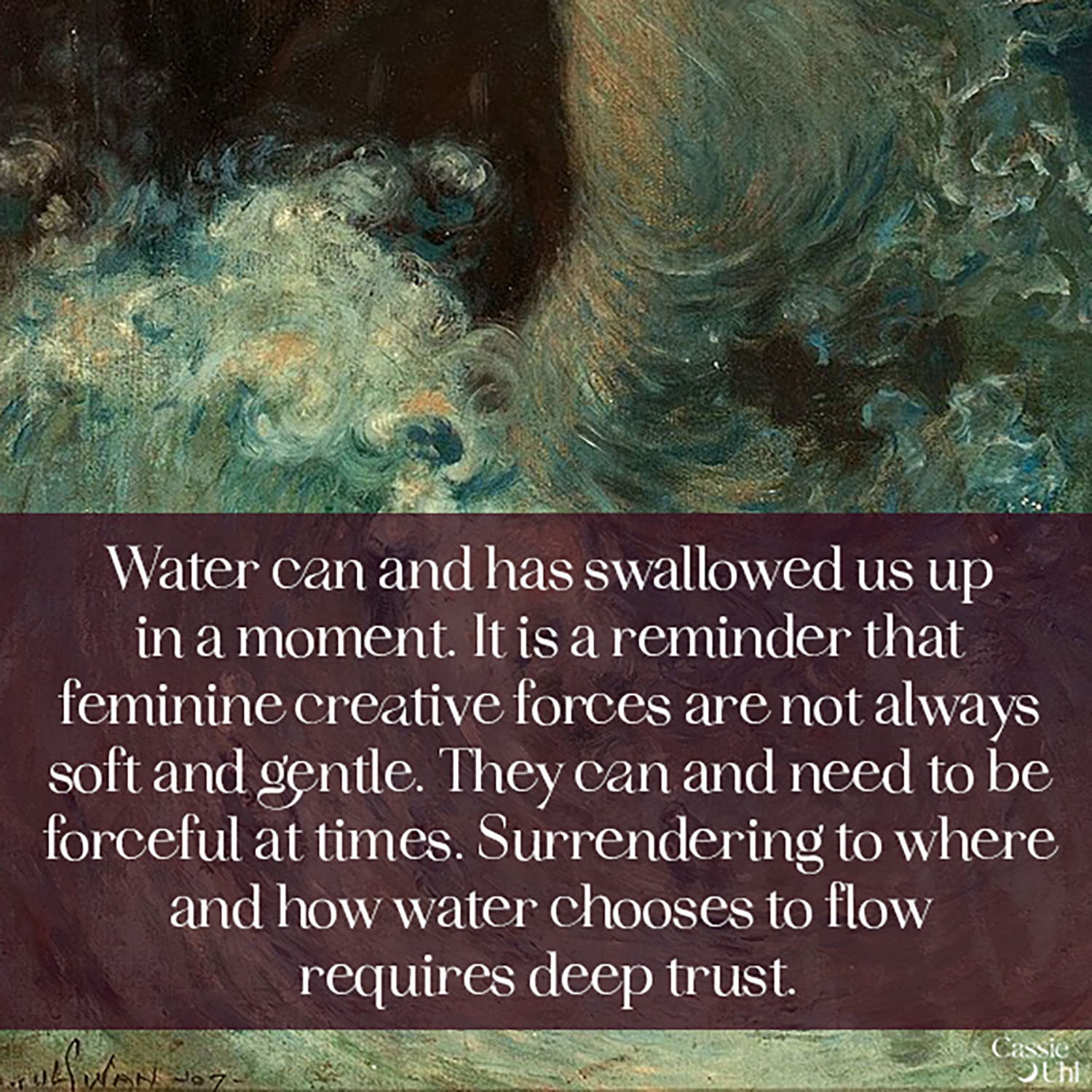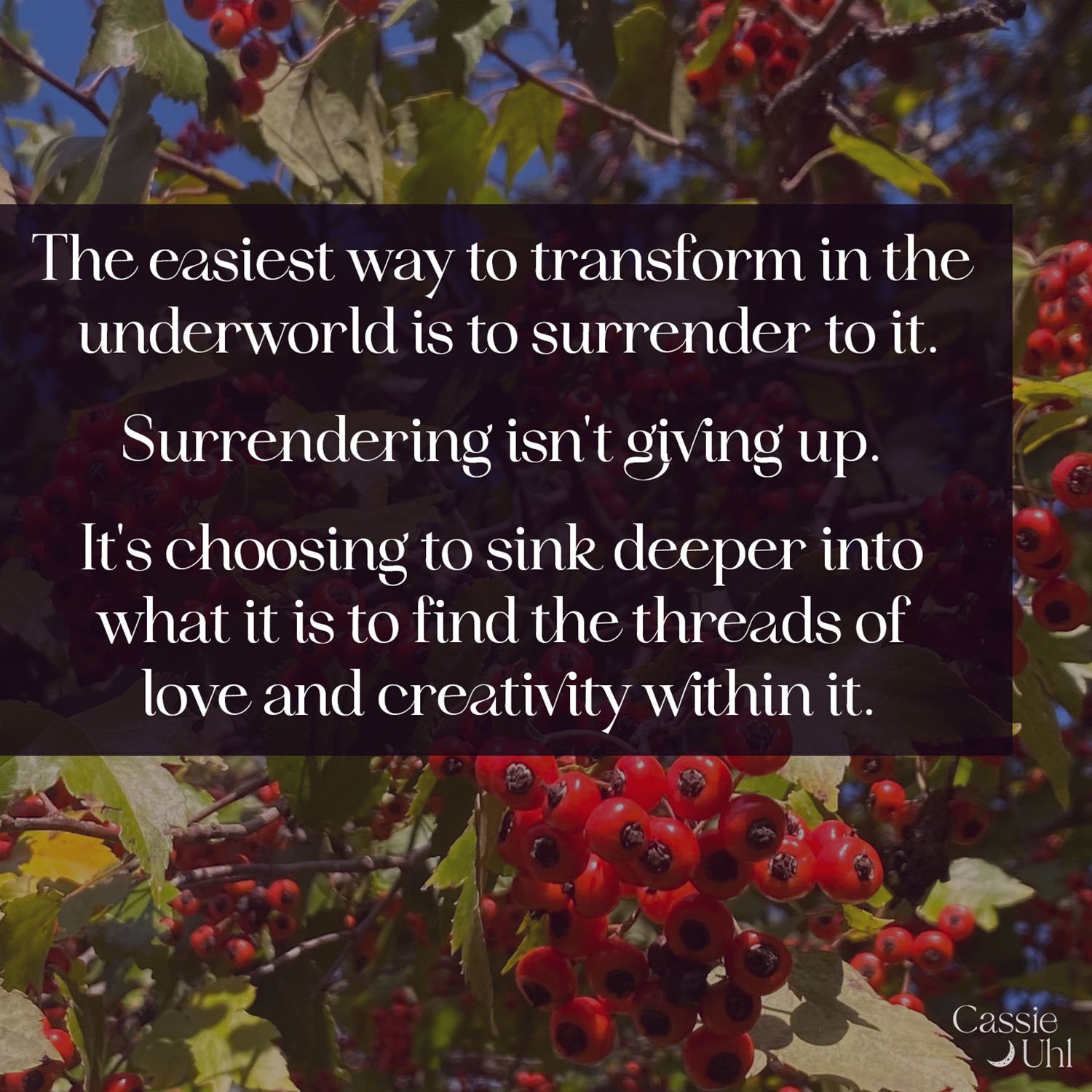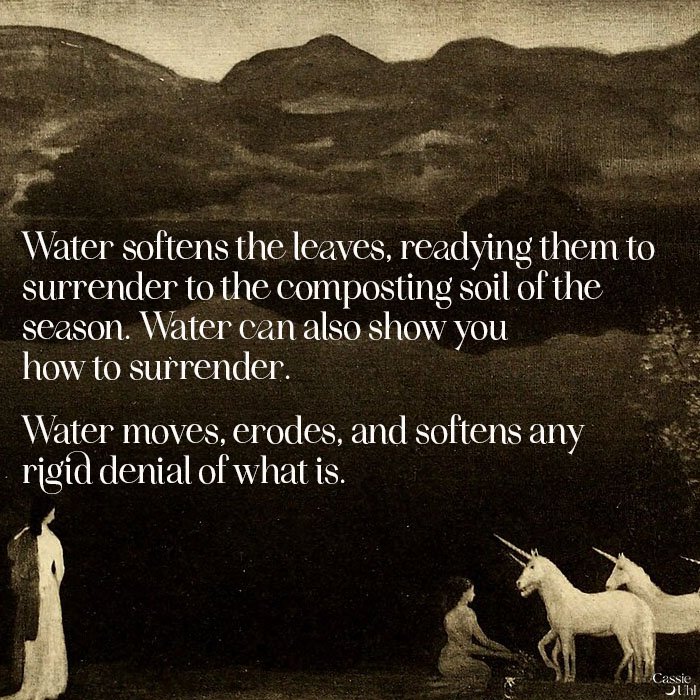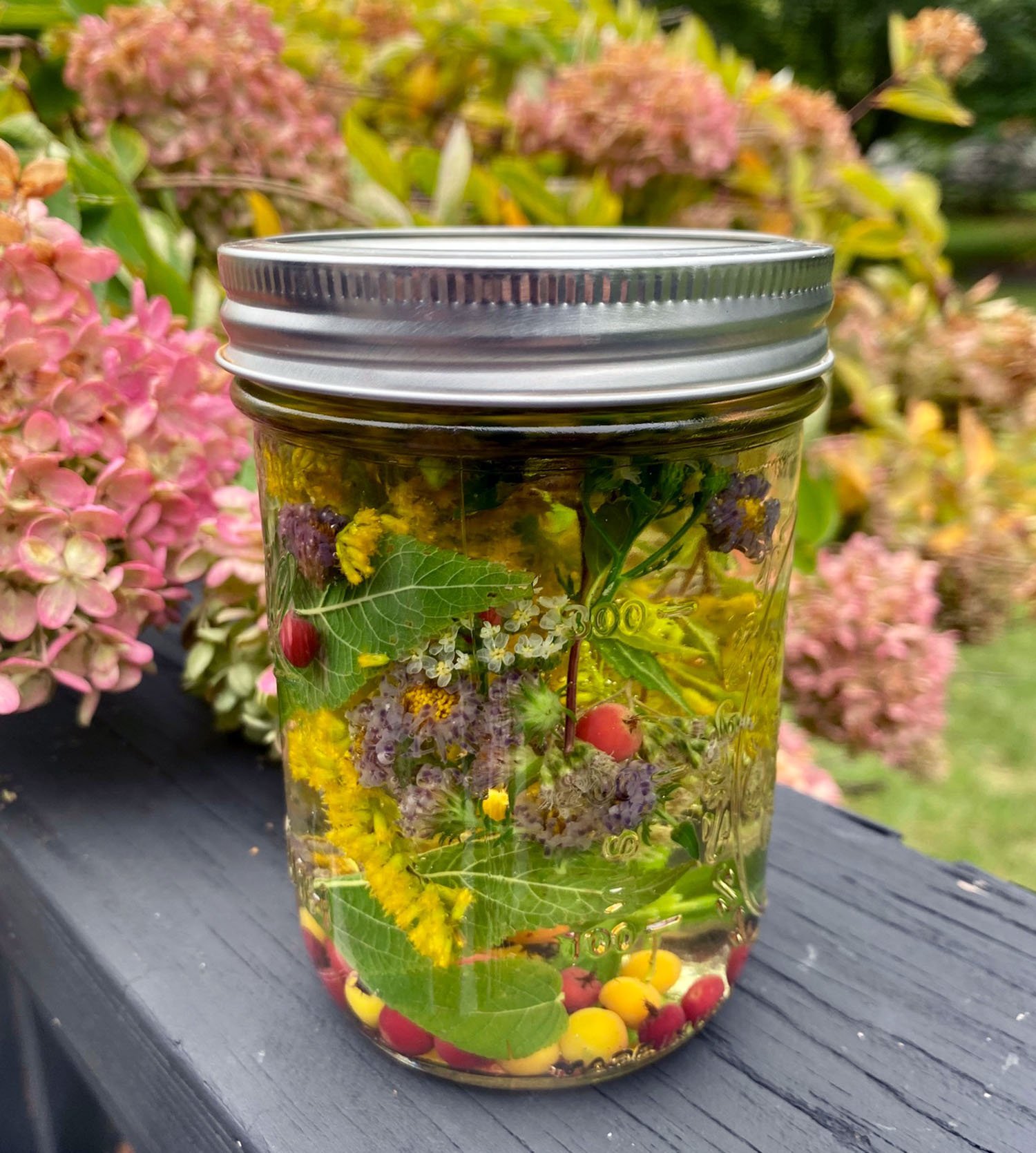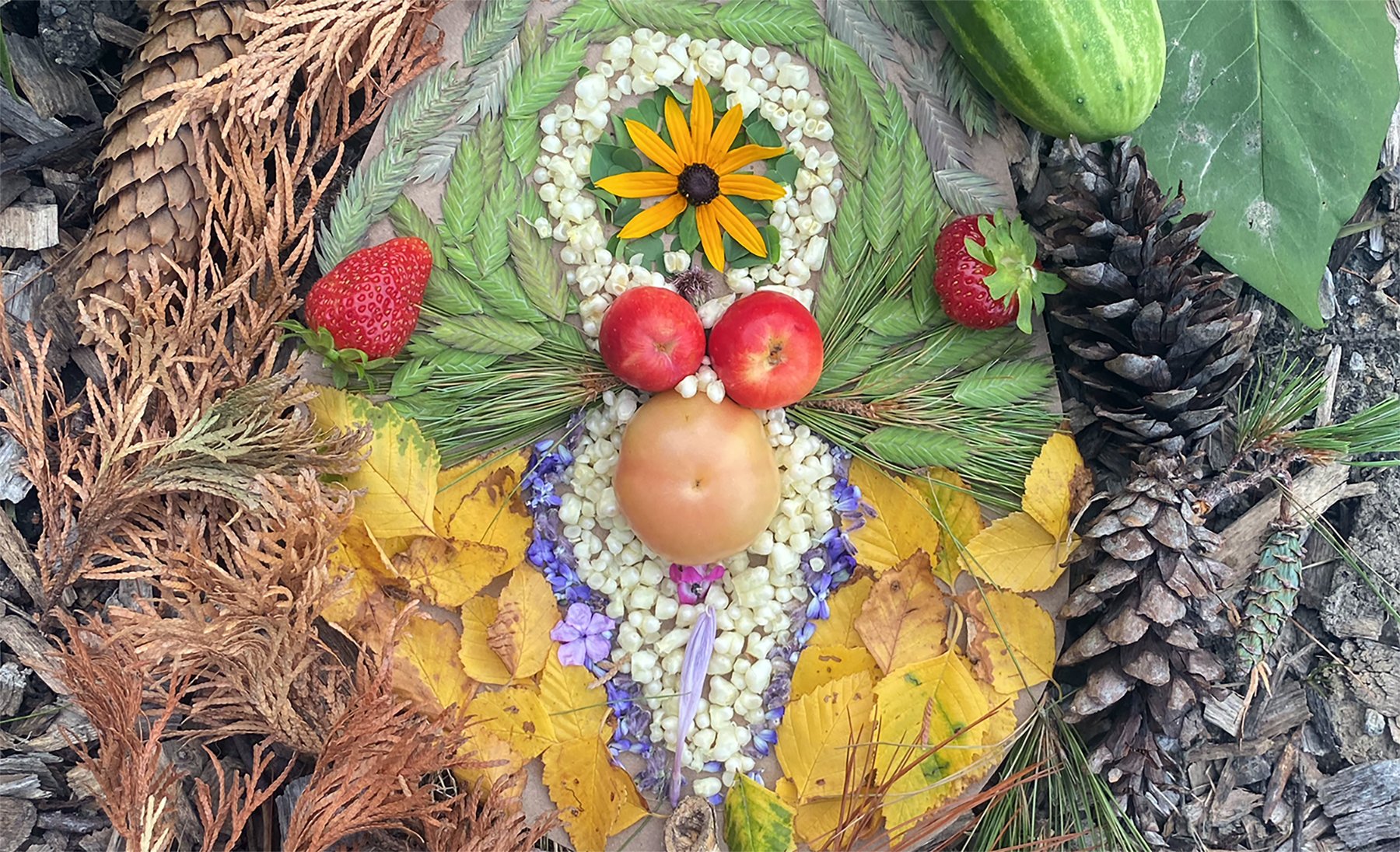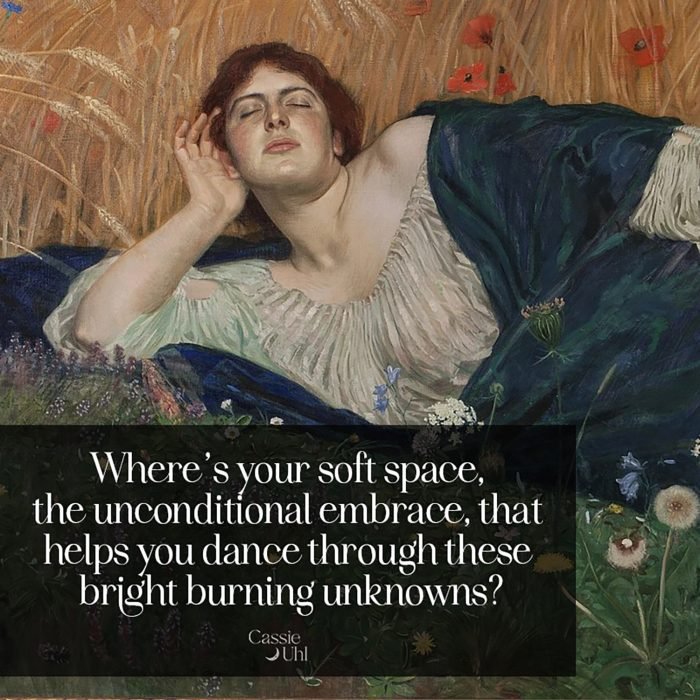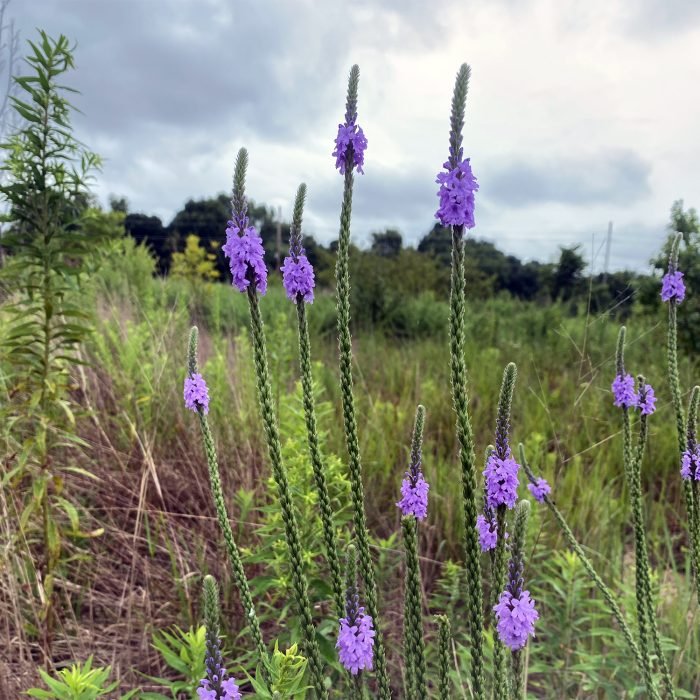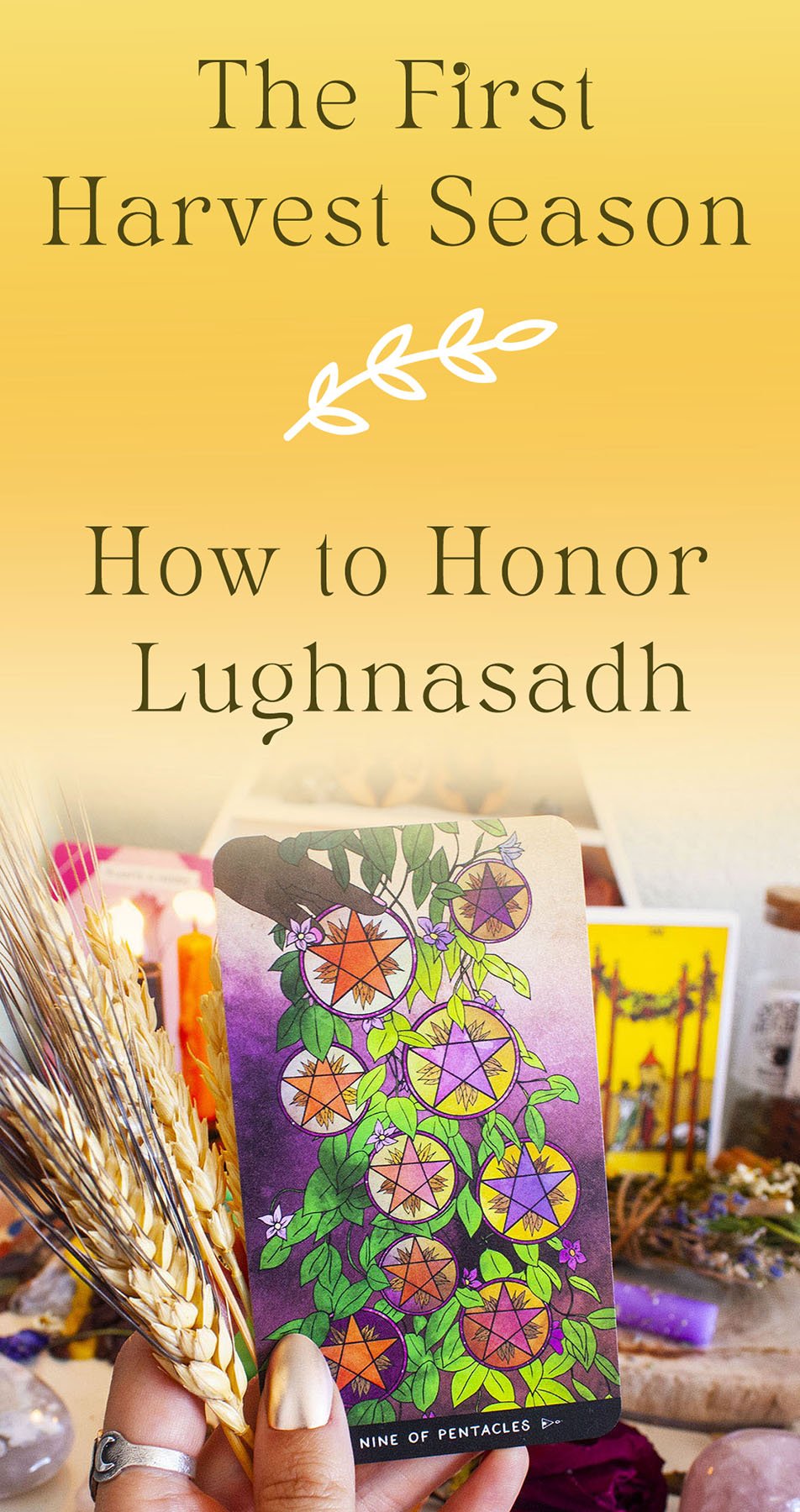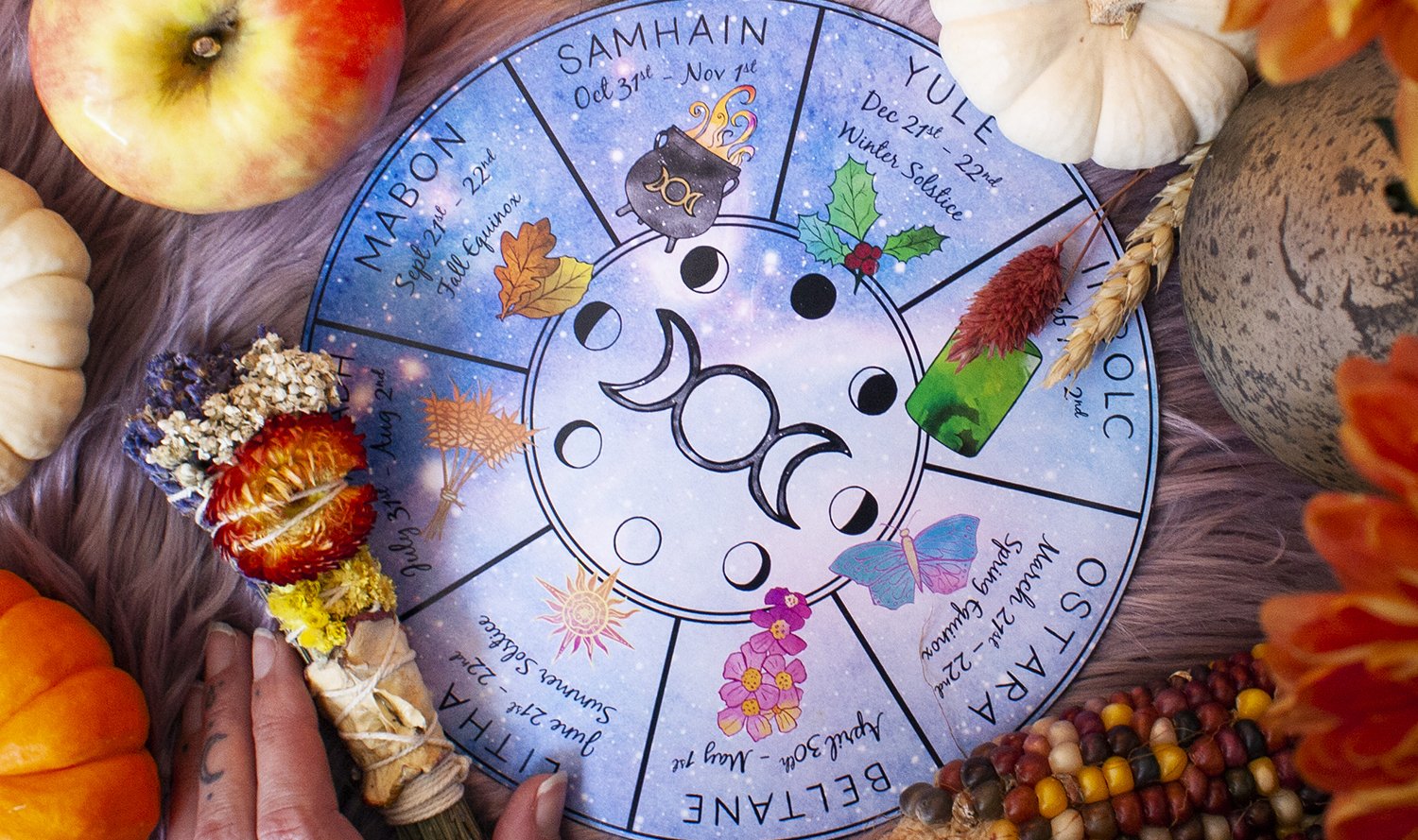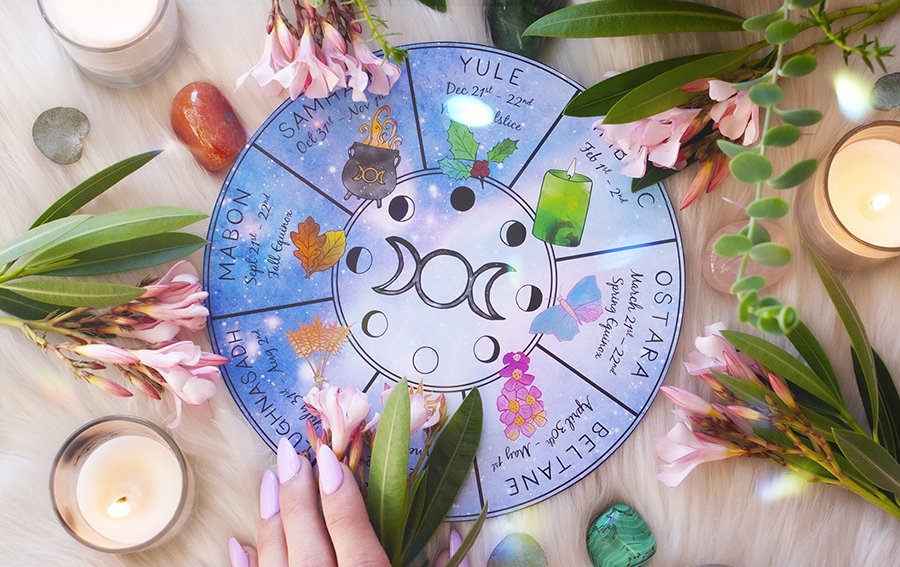Joyful Surrender in the Season of Shedding
Every plant and tree that cycles through the seasons knows that at some point, it is time to return inward and be held by the Earth. They don’t fight it and continue pouring their energy into their fruit until they know it’s time to turn inward or die. They surrender fully to the season and even continue expressing themselves and growing. The land has been whispering that there’s much more to surrender and it doesn’t always mean giving up. Surrendering can be joyful, even pleasurable.
Every plant and tree that cycles through the seasons knows that at some point, it is time to return inward and be held by the Earth. They don’t fight it and continue pouring their energy into their fruit until they know it’s time to turn inward or die. They surrender fully to the season and even continue expressing themselves and growing. The land has been whispering that there’s much more to surrender and it doesn’t always mean giving up. Surrendering can be joyful, even pleasurable.
Fall is a season of contractions helping us descend into Winter. Similar contractions are present during Spring. However, the essence and energy of each contraction phase differ significantly. In the Springtime, the season of the Maiden and the curious air element brings contractions to push us up and out from the underworld into the first blooms of the season. It’s an expansive and seductive time that is the portal that pushes us out through the underworld.
On the opposite side of the seasonal wheel, we have the Autumn Equinox, another season of contraction that pulls us down and into Winter, back into ourselves and the underworld. It is a season of surrender and shedding. Yet, it is also full of pleasure and fullness. It’s simply a different flavor than the Spring Equinox, and why wouldn’t it be? There’s a distinct difference between rising versus descending into the underworld. Both are sacred and needed.
Listen to this post on my podcast here.
As I’ve sat with and observed the guardian Hawthorne tree that lives outside of my home over the seasons, I’ve watched her push her blooms outward in Spring and am now slowly watching her berries redden and ripen as the weather cools. Her energy in this season is still one of expansion, but it is different. It is not the “look at me” energy of the maiden with her seductive flowers. The energy I receive from Hawthorn this season is “look at all that I can hold” and “look at how much love I can give.” Her round berries mimic the fullness of this season, the fullness of immense holding, giving, and joyful surrender.
The Hawthorn tree outside my home is not the only place I’ve seen and felt this energy. I can see it in the ripening apples, the browning grain, and the plants drooping closer to the earth below them. The easiest way to drift into the underworld is to surrender to it. In a society that, by and large, avoids the underworld and is generally death-phobic, consciously surrendering to seasons of slowness or stagnation might feel strange and difficult. It certainly has for me and continues to be a place of careful awareness. As usual, the earth, which you and I are a part of, offers constant examples of how we might do this from seasons, the moon, and our plant and animal kin.
In this share, we’ll dance with the theme of surrender and ways to find more joy in it. I’ll share reflections on the water element and a simple practice to connect with water and the theme of surrender. I’ll also discuss the importance of struggle regarding surrender and a simple plant infusion to help you ease into the season.
Some seasons can feel more present than others if you are spiraling through a similar personal season. This season, as a mid-life mother with small children and a caretaker, feels P-otent. If you find yourself in a position of frequent caregiving, whether that be for your children, elders, or community, you might, too. It is helpful to name how seasonal shifts affect us differently depending on your current phase. Of course, part of this is being able to name and be with the phase you’re in. I’d like to offer you a moment to pause to think about what season your life seems to be spiraling through in this transitional time. Are you in a phase of discovery and exploration, radiance and expansion, giving and caretaking, surrender, and reflection, or somewhere else? Understanding where you’re in your sacred cycle might help you better understand and relate to the transformations happening in the land and seasons. Of course, there are always cycles within cycles, above and below, within and without. All is connected, so I trust you’ll find some meaning and medicine in this share, even if it doesn’t align with your season.
Let’s begin our dance with surrender by exploring the element commonly associated with this season: water.
Lessons from water on surrender
Water is the element that many associate with the cardinal direction West and the season of Autumn. Early in my practice, I didn’t understand the connection between Autumn and the element of water. Autumn reminded me of leaves drying and dying. It seemed like the opposite of life-giving water. Over several years of working closely with water and themes of death, I have a more holistic understanding of water. Water is a life-giver, but water also asks us to be in flow with and surrender to change, including changes we might not always desire. Water reminds me that I do not need to love the changes themselves, but I can learn how to love myself in them. Water can be gentle, forceful, and everything in between. While walking in Autumn and water, you can surrender to her lessons by choice, or they can be forced on you.
As much as we humans like to think we have complete control over our lives, we don’t, and water can be a potent reminder of this lesson. Water can and has swallowed us up in a moment with floods and sudden downpours. It is a reminder that the feminine creative forces are not always soft and gentle. They can and need to be forceful at times. Surrendering to where and how water chooses to flow requires deep trust.
Joyful surrender offers a portal into being present and at peace with the unknown. I see the element of water as a wise teacher in this realm.
There’s an easefulness that lives in surrender. It can be found in the waning moon, flowing water, an exhale, and the transition from Summer to Fall. Life is change. But, like the moon, who changes every night, she is still the moon at her core. You, too, will embark on endless transformations throughout your life but will remain you at your core. How would you move about the world if you surrendered to the unknowns and constant changes, both within and outside of you, knowing that you will remain you in the end?
Of course, some of this is a personal belief and may not resonate because I believe in reincarnation and the soul. Like the moon, who dies each month, or the water, who cycles through different states of being, I trust that my essence will remain intact and carry on in some capacity.
So how can we be more like water and surrender to our own cycles and others? It’s much easier to find the joy in any cycle when we surrender. Be with, watch, listen, feel, and commune with water. Here’s a simple practice I like to do in collaboration with water.
Surrendering with water practice
I like to lean into this practice and the element of water when I struggle with surrendering to something and want assistance. You can practice this at home or a nearby creek or stream. I love doing this near flowing water, but if that is not accessible, visualizing or thinking about water works just as well.
Open your practice in a way that you are comfortable with. For me, this looks like greeting, thanking the four elements and directions, and connecting with the earth.
If it’s available and makes sense in your practice, orient yourself to the West, the home of the water element, and ask the water if you can bring your struggle to it for help.
How you engage with water now will be unique to you. I like to imagine the water gently flowing through my body, including my struggle. If you are near flowing water, the sound or feel of the water can be helpful if it’s accessible to listen or touch the water. If you are not near water, you can visualize the water flowing around you, imagine how it would feel, or even dictate to yourself what it would be like.
Imagine the water gently softening and soothing your struggle. You may notice the water slowly start pulling parts of it away, parts of your struggle that it’s time for you to release. You might become aware of how it feels to let go of aspects of your struggle and notice other sensations or knowings under the struggle.
Stay with the water for as long as you’d like. When you feel complete in this practice, thank the water and consider giving an offering to the water. You might also want to write down anything that surfaced during your experience with water.
All this said, joyful surrender is not always easy for me and might not be for you. I still struggle often. But I’ve learned to accept the struggle as part of the surrender process. I also think it has a lot of wisdom to offer.
The Medicine in the Struggle
The relationship between struggle and surrender is, I believe, much of the medicine this season has to offer. I find the struggle is what gets me to a state of surrender. Sometimes, I have long periods of struggle. Sometimes, they’re short. I see struggle often in deathwork for the dying and their loved ones. There’s often a denial of impending death, but there will come a moment when that denial no longer serves. The time one sits in the struggle will be different for all, but it has value.
Struggle can be found in the dance of fire and can illuminate what needs or wants to be tended. In the struggle, you can see what’s most important. The struggle is necessary. I do not share these reflections on joyful surrender to imply that it is better than being in the struggle. Being in the struggle is hard. But the struggle also has the power to illuminate. I don’t see the struggle as the problem, but it’s often our lack of resources to be with the struggle that prevents us from being with it. There’s nuance here, too. We all have different relationships and experiences with struggle. My prayer for myself, for you, and all of us is that we can have the presence to know when it’s time to stop being in the struggle and step into surrender, maybe even joyful surrender. Whether that surrender looks like asking for help, walking away from someone, acceptance, or something else will be unique.
One of my favorite writers and speakers is Dr. Bayo Akomolafe, who often speaks of “fugitive spaces.” If you haven’t listened to Dr. Akomolafe, I highly recommend it and will link some of my favorite podcasts in the show notes. He’s featured on the For the Wild podcast and SAND often. I find his words and ideas to be a healing salve in these times. He speaks to “fugitive spaces” here and says, “We need trickster approaches, we need ways of dancing away, or dancing to, fugitive spaces; dancing to sanctuaries where we can shape-shift. Grieving, mourning, even allowing ourselves to partake in pleasurable activities in the face of the storm.” I feel these fugitive spaces are areas of play that do not insist on knowing or constantly striving for all the answers and instead offer a space to marinate in the mystery. When I think of fugitive spaces concerning climate change, I think of having conversations outside of how to curb climate collapse and instead focusing on how we might learn to love each other in climate collapse. I find this requires a great deal of surrender and often think of “fugitive spaces” when I think of joyful surrender and how surrendering can yield new possibilities found only in unknown spaces.
In my day-to-day life, I don’t experience the idea of seeking fugitive spaces to disavow being in right relationship with the earth. Instead, I see it as an opportunity to shift my energy around the topic and my actions. For example, I am involved in local politics and often spend time canvassing for local candidates. I used to do this sort of work with a lot of anger. I’d be so mad that more people weren’t helping. I still do sometimes. More often now, I find myself looking for surrender in my political involvement. I still canvass, but I try to surrender to the parts of it that I love, like community building with like-minded people. I also don’t beat myself up if I can’t help as much as I’d like to. Perhaps there will be a tipping point when more and more of us will release the struggle of trying to force politicians, oil companies, and other people to care about this earth and, instead, lean into ways to love within it. That is the energy I am attempting to bring to my life, which is still a struggle sometimes. I still get angry and spin my wheels, thinking of ways to convince people to care about this earth and continue to change my own habits. But, more and more, I observe and ask questions like, “What or who am I truly struggling against right now?” “Is what or who I’m struggling with of my own making or out of my control?” “If it is out of my control, how might surrendering to it look and feel?” “Can I find any threads of ease or joy within what I’m struggling against?”
There’s medicine in our ability to surrender to the struggles of this current time. When we do, we can get a glimpse of what’s underneath them and perhaps even find new and beautiful solutions, love, and joy.
The joy available in surrender
There is beauty, magic, and deep wisdom in surrender. Surrender lives in the realm of the deeply rooted Wise Woman and the Crone, who trusts that there’s life and even beauty beyond the struggle. Surrendering isn’t giving up or accepting abuse. It’s choosing to sink deeper into the struggle to find the threads of love and creativity within it. It’s easier said than done. At least, it has been for me. I don’t have it figured out. I still get caught up in the questioning, fear, and anger. Sometimes, I overstay my welcome sitting in the struggle. Surrendering also doesn’t mean that everything I surrender to immediately feels amazing. Sometimes it doesn’t. Joyful surrender may not be the answer to the suffering of this world, but I see it as a powerful place to explore finding joy in the mess of life.
Plant allies for the season of surrender
Wherever you are in the world, plants are growing nearby to assist in this seasonal shift, whether you are experiencing Autumn or Spring in the Southern Hemisphere. The magic of our plant kin is that they are so deeply connected to the pulse of Mother Earth that they know what is needed in each season for all to thrive. Here in the Midwest of Turtle Island, Goldenrod and Aster are prevalent and serve as physical and energetic supports for our descent into fall. I invite you to notice which plants are appearing in your local environment and, if it feels aligned, to engage with them.
I love making infusions, what some might think of as tea, with the plants and flowers. An infusion is simply soaking plant material in hot water for a certain amount of time, sometimes 30-minutes, or as long as overnight. After pouring boiling water over the plants I’m working with, I like to allow my infusions to rest in the sunlight or moonlight depending on the energy the plants ask for or I am desiring. I was inspired to make a fall infusion with seasonal plants in my area from Dr. Jacqui of Xálish Medicine and recommend visiting this post she shared on Instagram all about it.
As always, before creating an infusion with any plant, ensure that they are safe to consume and that they are not contraindicated for you by confirming with your healthcare provider. If you have goldenrod and aster in your area, they are generally considered safe to consume, however, always be sure to make sure they are safe for you specifically. I also recommend harvesting by asking consent before taking and leaving offerings. I like to keep a flower essence with me while I’m out to give as an offering.
I created my infusion with a combination of foraged and garden-grown Goldenrod, Aster, Chokeberry, Hawthorn berry, Boneset, Sage, and Yarrow. It was delicious and felt like such a potent way to ease my body, physically and energetically, into the season. You could easily create an infusion of just Astser and Goldenrod for a simple fall infusion.
As the flowers wilt and brown and as leaves shift colors in preparation for winter, I can’t help but notice the joyful surrender in the landscapes around me. I see it in the ripening fullness of the berries on the Hawthorn tree, the lavender plants in my yard stretching their flowers out further and further to catch the sinking sun, and busy squirrels and chipmunks readying their winter harvests. As I reflect upon these changes, I remember that I, too, am part of these cycles. I do not need to know the course of what will be for me, my family, or the rest of us to continue to show up in fullness. Or, perhaps, if I slow myself enough, like the earth, I will feel its pulse and know that all will always be well. I can joyfully follow the rhythms of the earth’s cycles both within and outside. I can serve where I feel called, even when I don’t know how it will look, trusting that if I surrender to my season, I will be guided. I hope within these reflections, you’ve found any permission you may have needed to surrender to your current season and maybe even find the joy in it.
The Nurturing Mother of Late Summer
The golden glow of summer is present but slowly fading. Fruits are ripe as the land continues to give, and the Earth’s love for us can be seen, felt, and tasted. There’s much to celebrate and much to grieve. Burning land, displacement, and smoke-tinged air offer potent reminders of where we are. It feels like too much more often than not. Then I remember these cycles, even human-created, will continue with or without me and that soft spaces are needed. The Nurturing Mother of late summer holds out her bountiful arms to nurture our grief. Soft spaces exist to grieve and be held but sometimes need to be cultivated from within.
The golden glow of summer is present but slowly fading. Fruits are ripe as the land continues to give, and the Earth’s love for us can be seen, felt, and tasted. There’s much to celebrate and much to grieve. Burning land, displacement, and smoke-tinged air offer potent reminders of where we are. It feels like too much more often than not. Then I remember these cycles, even human-created, will continue with or without me and that soft spaces are needed. The Nurturing Mother of late summer holds out her bountiful arms to nurture our grief. Soft spaces exist to grieve and be held but sometimes need to be cultivated from within.
In this month’s Seasonal Magic and Medicine, enjoy reflections on the Goddesses Ceres and Demeter, a short writing about our need for soft spaces, a guided journey meditation to connect with Nurturing Mother of Late Summer, and a ritual to connect with plants in your local environment. Click here to join my newsletter to receive these monthly Seasonal Magic and Medicine articles in your inbox.
Ceres and Demeter
The presence of the Greek Goddess Demeter and Roman Goddess Ceres, who many believe are one and the same, move to the foreground during this season. Ceres and Demeter are Mother Goddesses of the harvest, grain, nourishment, protection, grief, and fertility. They help to ensure and protect a bountiful harvest while providing a warm lap for the impending grief of winter.
L’ete, Ceres – Jean-François Millet (1864-1865). Wikimedia Commons.
In the case of Demeter, she knows her daughter, Persephone, who some view as an aspect of Demeter, will soon return to the Underworld for six months during the dark half of the year. Persephone returns to the Underworld by choice each year, rather than force, as a necessary aspect of the birth-death-rebirth cycle. Monica Sjöö references this in The Great Cosmic Mother, “As the Grieving, determined mother she descends to the Underworld–into social rebellion, role-reversals, personal madness, the dark journeys of introspection and disintegration that precedes creative, visionary power–to rediscover her own soul, retrieve the joyous daughter of self-determining life.”
Ceres was an especially beloved Goddess of the common people of Rome because she offered protection from the Roman empire and more closely resembled the original regenerative Earth Goddesses. I feel this protective essence of Ceres especially potent this season, in the land, and for the masses (human and more-than-human) demanding a liveable future.
We see in these Goddesses an opportunity to be nourished by the land and be held in our grief as we honor cycles of death in the land and ourselves to “rediscover” our “own soul,” as Sjöö puts it.
Creating Soft Spaces
Earth’s cycles persist. Embrace or ignore them, but know they won’t stop because you are them. Where’s your soft space, the unconditional embrace that helps you dance through these bright, burning unknowns?
Soft spaces exist. Flowers bloom, and trees fruit amidst climate collapse as their kin die, burn, or drown. They don’t hide away til it’s done. They lean in to be held and nourished from within and around. They allow it because they know they‘ll have a soft place to land, right here in the land. Swallowed up and held tight by the Great Mother’s embrace, all to rise and do it again.
Who holds you, dear one, when you realize the soft spaces were paved over? Where do you lay your grief and gather your love, or do they lie dormant and stagnant within you?
The cycles will persist, with or without you, and whiteness and money will never be enough to save you. Mother Earth will forever continue to birth, dance, and die.
Every phase has its place in her warm embrace, readying for death and rebirth to continue. She’s breaking the pavement of soft spaces paved over.
Where does it leave you, us? The soft, warm lap of the Great Mother, the Earth, whoever you call them, offers this respite and the wisdom to remember. Their love can be seen in weeds weaving through cracks and Orcas fighting back. Each example a reminder that cultivating soft spaces together makes us much safer.
Is it time for you to allow or to come out from hiding? When we build soft spaces together, they’re much harder to crack. The flowers do not struggle to bloom or do it alone. They take their time, roots connected to all. Taking cues from above and below, guiding them to grow, dance, and die. They know their blooming signals an eventual return to the soft space of compost, yet they move right along. Maybe that’s why we deny our own mysterious callings. We know it’s a surrender to eventually going back home.
So, I ask you again, who holds you, dear one, when you realize the soft spaces were paved over? Where do you lay your grief and gather your love, or do they lie dormant within? Perhaps, we can create soft spaces together, held in the warm embrace of a Great Nurturing Mother.
Nurturing Mother Meditation
What are you grieving this season? Let’s cultivate a soft space within to give it a home. Join me in a live circle to grieve and be held by the great Nurturing Mother of Summer by clicking here. Or, follow these steps to have a meditation journey of your own. As always, modify as needed.
Before you begin, bring something to mind that feels tender and needs grieving. You might decide to have a physical representation of what you are grieving. If so, you can have that with you for meditation, but it is not a necessity.
Create a sacred space for your meditation in line with your practice. There are many ways to do this, like lighting incense, a candle, calling upon guides, and honoring the four directions. You might also like to play soft drumming music, or nature sounds that help you meditate.
Begin to focus on your breath and body. Spend as much time here as you need to feel aware and embodied.
Close your eyes or gaze softly ahead and begin to visualize with your mind’s eye an environment that feels safe. If you work with any guides or allies, you can connect with them here and invite them on the journey.
Notice a door appears, and if it feels aligned, walk through it.
Out ahead, you see a great stone circle. Walk in through the East to the center. From the center stone, orient yourself towards the Southwest and notice a warm golden glow.
As you exit the stone circle and walk towards the warm glow, become aware of how the environment looks, smells, and feels.
With the warm sun overhead, call upon the Great Mother with your grief in hand. She will appear uniquely to all, perhaps as a person or not or as the land itself. Allow yourself to be guided in how you interact with her.
Offer your grief to be held, again allowing your intuitive connection with her to guide you.
Spend as much time here, perhaps sitting in her lap, weeping, or noticing the beauty and nourishment of the season.
When you feel ready to go, thank the Great Mother, and head back towards the stone circle to the center stone. Pause at the center stone before exiting out the east and heading back to the doorway.
Once through the doorway, thank any guides or allies who accompanied you. Open your eyes and return to your space as you are ready. Consider journaling your experience, looking around your room, and having food and drink to help reorient you to your physical environment.
Plant Connection Ritual
This ritual is an invitation to connect deeply with a plant(s) in your local environment as a form of gratitude and nourishment. The plant world’s ability to continue to give fruit amidst our quickly changing world holds wisdom.
This ritual does not require receiving anything physical from the plant (although it could) and might come through as an insight or simply through being present with a plant’s beauty.
Vervain, Verbena Stricta.
You might find it helpful to take some time before committing to this ritual to become more aware of the plants growing in your local environment and notice if any particular plants call to you or if you notice some more than others.
You’ll need:
20-40 minutes
offering (smoke, water, stone, anything that feels aligned with your practice)
plant(s)
Based on what is accessible to you and your body, go for a walk or find a place to sit where there are plants. Doing this does not require a lush forest or prairie and can be done with plants in your yard, community, or even a shopping center.
Once you’ve decided on a location, find a plant you feel called to connect with and sit with or near it. Before connecting with the plant, consider asking permission to connect with it. If getting close to a plant is not accessible, you can perform this ritual as a meditation by visualizing the plant within your mind’s eye.
Notice how the plant supports life and gives to its local environment. Does it have fruit, flowers, or seeds? Are there bugs, birds, or bees on or around it? Is it protecting the soil? Notice the plants, leaves, fruit, or flowers. What do you find beautiful about them?
Consider asking the plant questions. Some to consider might be, “Tell me about your essence?”, “Who do you nurture?”, “What bring you joy?”, “Can I do anything for you?”, or “Would you like to give anything to me?”. Answers might come through as inner knowings, feelings, visuals in the mind’s eye, or inner dialogue.
Act accordingly, and as you can, if you receive invitations to give or receive from the plant. For example, if you feel the plant wants water, bring it. If you feel the plant wants to share itself with you in some physical way, allow yourself to receive it (of course, do not ingest anything unless you know it is safe to do so.)
Thank the plant for its energy and give your offering.
As late summer slowly yields to fall, its beauty and bounty feel especially transient and tender. Our ever-turning cycles are a constant reminder that nothing lasts forever. Fortunately, lasting forever is not a prerequisite to savoring the fruit of the season, the joys of life, or the beauty of the earth. May your grief give way to soft spaces that allow you to be nurtured enough to descend into your own personal underworlds.
Harvest Season Begins // How to Honor Lughnasadh and Your Gifts
Lughnasadh is the first harvest and the first celebration to honor the waning phase of the year. Just like the waning gibbous, this season is a time to reflect, harvest, gather, reap, and allow yourself to come to fruition. The flurry of growth has happened. The peak of summer has come and gone. Though it may still be hot where you are, some “crops” are ready to be harvested, both physically and metaphorically. So, what does this season mean for you, and what does it call you to explore and reflect upon?
Lughnasadh is the first harvest and the first celebration to honor the waning phase of the year. Just like the waning gibbous, this season is a time to reflect, harvest, gather, reap, and allow yourself to come to fruition. The flurry of growth has happened. The peak of summer has come and gone. Though it may still be hot where you are, some “crops” are ready to be harvested, both physically and metaphorically. So, what does this season mean for you, and what does it call you to explore and reflect upon?
This post will discuss the intersection of the first harvest season, Leo season, and Lughnasadh. We’ll explore a bit of history about the Celtic God Lugh and how he fits into all of this. Lastly, I’ll offer a few ways to honor and work with the energy of this season.
Listen to this blog post on my podcast, Rooting into Wholeness below.
What is Lughnasadh, and is it the same as Lammas?
On the wheel of the year, Lughnasadh is traditionally celebrated on August 1st or the first harvest. It is the midway point between the Summer Solstice and the Fall Equinox. As always, I encourage you to celebrate at a time that’s meaningful for you. For example, if you do gardening or farming, it’s fine to wait until you’re actually ready to harvest. Alternatively, if you want to celebrate on the 1st, that’s fine too.
I feel that the Sabbat of Lughnasadh (loo-nah-sah), also called Lammas, is one of the more undervalued seasonal celebrations. I prefer to stick with the name Lughnasadh as it is more in line with my spiritual beliefs and paths (I think its spelling puts many off, but it’s really a quite beautiful name.) The name Lammas comes from the phrase “loaf mass” and is the Christianized version of the original celebration to honor the God Lugh and the first harvest. This is truly one of my favorite times of the year.
Who's Lugh?
The name Lughnasadh comes from the well-documented Celtic warrior and sun God, Lugh. His name actually translates to “light.” Lugh was a skilled craftsman who bore many talents. He created Lughnasadh as a celebration of the first harvest and to honor his foster mother.
Lugh is deeply intertwined with the harvest season because, according to lore, he brought the knowledge of growing and harvesting crops to hunter-gatherer tribes after winning a battle with an old King. Of course, knowing how to grow and harvest crops was life-changing for our ancestors from Northern and Western Europe. This is another reason I prefer to refer to this celebration as Lughnasadh. It honors the triumphs of our ancestors. Our ancestors did not always grow their own crops, but when we did, it changed everything. Thus the first harvest is of incredible importance and something to thank our ancestors for to this day.
On an energetic level, Lugh is a reminder to continue to refine our crafts, learn new skills, and honor our talents both on an individual and collective level. This is a highly celebratory season and, pride is a big theme of Lugh and Lughnasadh.
Leo Season and Lughnasadh
This naturally brings me to Leo season! For Tropical astrology (what I use), Leo season begins on July 23rd and aligns beautifully with Lughnasadh. Leo is ruled by the Sun (we can see another overlap here with the God Lugh.) This is indeed a very sunny time of the year, physically and metaphorically speaking. Now I won’t dive too deep into the astrology of Leo because it's been covered on this blog more extensively here, but here are a few things to note. Leo, a fixed fire sign, calls each of us to find the inner strength to share our gifts and true selves with the world boldly. Leo connects with strength and the sun in the tarot, again mirroring a need to share your gifts boldly with the world and again connecting Lugh to this season through the sun card.
I’m sure you can now see and perhaps even feel the immense power, strength, and celebratory energy associated with this season and its many components! Not all of our seasonal and zodiac energies align this beautifully, but this one does so beautifully.
Rituals Suggestions for Lughnasadh
How can you harness this potent energy offered by Lughnasadh and Leo season? Here are some coming dates and four considerations for connecting with and honoring the energy of this season. I’ll focus on the themes we’ve already discussed of harvest, pride, and full expression.
First, we have the new moon in Leo from August 8-9 (2021). This will be an ideal time to be open to spirit for new ways to share your gifts with the world and consider being open to new ways to express yourself and your gifts.
Then we have a full moon in Aquarius on August 22nd (2021.) This will be an ideal time to express your truth and focus on themes of harvest and gratitude.
Now some ritual suggestions. Of course, I always like to preface any ritual suggestions with some reminders. First, I view each celebration on the Wheel of the Year as a season. This means you do not have to do all of these things on August 1st. I certainly won’t be and wouldn’t suggest it either (unless you really want to and don’t have twins at home like me!) Space it out, do what you feel called to do when you feel called to do it. Our ancestors did not complete their harvests in one day (in fact, it sprawls three entire seasons), they merely began. I always like to remind you to approach each Sabbat as a season rather than a day. Never discount the power of being aware and sitting in the energy of each season. This in and of itself is a ritual. Lastly, and as always, take what you like and leave the rest.
1. Pride Ritual
So many of us, myself included, rarely celebrate and honor our accomplishments. Seriously, I am so bad at this! I have really worked on celebrating all that I’ve accomplished and have friends who keep me in check and remind me often. Now it's time for you to get clear and honest about this, when was the last time you really celebrated your wins?
In our capitalist-driven world, the primary message we receive is "create, create, and create more." This is one big reason why working the seasons into your spiritual practice is so valuable. You are not meant to create all the time! Furthermore, you not only need rest and self-care, but you also need time to honor and celebrate how far you've come.
This one can be easy, join me. Right now, pause and think about three amazing things you’ve done this year. I don’t care how big or small they are, but I want you to sit in the energy of pride and celebration for yourself. My three are that I took a step back from work to take time off and work less, I started exercising again, and I wrote two books and created a tarot card deck. Sit in it. What does it feel like to celebrate yourself? Does it feel uncomfortable? Are you coming up with all the things you wish you’d accomplished but haven’t yet or all the things you still “need” to do? Kindly ask all of that garbage to step back for a moment while you revel in what you have accomplished. It’s time to harvest your efforts and take in your growth.
If you want to take this a step further, write it down and place it on your altar, maybe light a candle for yourself, so often we light candles for others. When was the last time you lit one for yourself? Consider making or buying yourself a treat to celebrate your accomplishments. This could be as simple as making yourself your favorite dinner or giving yourself time and space to watch a favorite movie. What feels like a beautiful way to celebrate your accomplishments right now?
2. Gratitude Offering for the Mother Earth
With any harvest comes gratitude. This is a theme we’ll see in each of the three harvest seasons (Lughnasadh, the autumn equinox, and Samhain.) I think it’s important to honor the earth for every seasonal celebration, but even more so for our harvest celebrations. Even though most of us do not have an active hand in growing and harvesting the food we eat, these harvest celebrations are what kept many of our ancestors alive. It gives us an opportunity, or reminder, to give thanks to mother earth for all of the nourishment she’s given us throughout the year; if you do harvest around this time of year, even better! You’ll have a tangible way to honor this season and the earth. For those who don’t, here are some ways to consider giving thanks to the earth for the bounty of food you have.
Create an earth offering of flowers, stones, food, or other compostable items you resonate with. I like to do this by going for a walk and collecting different items that catch my eye. Then, I’ll find a location I feel called to set up my offering. This could be a mandala or any arrangement that feels good to you. As you set it up, think about all of the gifts the earth has given your this year, all the food you’ve been nourished with.
You could also take this ritual inside and create another offering on your altar space as a gratitude offering to mother earth.
3. Explore Lugnasadh and Leo in the Tarot
For this one, we’ll be circling back to our Leo energy a bit more. This would be a great ritual to practice anytime during the waxing growth phase of the moon from August 1-22nd, with the intention of tapping into expressing your gifts and focusing again on the theme of harvest.
As I already mentioned, the cards that correspond with Leo in the tarot are the sun and strength. There’s also a perfect card for Lugnasadh too, and that’s the nine of pentacles. I feel like this card embodies the energy of this season soooooo beautifully. Numerologically speaking, nine’s represent fulfillment and fruition. Pentacles are our suit of earth. So the nine of pentacles, in my opinion, is very literally a card of harvest.
Card featured from Journey Tarot. Get it here.
There are so many ways to connect with these cards. As I mentioned, the waxing phase or the full moon are great times to work with the energies of these cards. Perhaps, even consider lighting a red or orange candle to focus on the fiery energy of the sun and strength. You could journal with these cards, meditate with them, simply place them on your altar, or draw your own versions of them, as I’ve mentioned in previous rituals. Be open to their lessons and what they have to offer you during this season.
4. Traditional Lughnasadh Rituals and Correspondences
Of course, I can’t leave you without covering some of the more traditional rituals and correspondences for this season. Some we’ve already covered but here’s a list of common correspondences. Most of these come straight out of my new book, “Understanding the Wheel of the Year”.
Colors: Gold, red, orange, purple, tan
Plants and scents: Sunflower, calendula, hops, vervain, rosehips, or anything seasonal where you live
Food: Wheat, corn, bread, beer, berries, or anything seasonal where you live
Crystals: tiger’s eye, red jasper, pyrite, smokey quartz
Traditional Lughnasadh Rituals:
Bake bread, enjoy bread, leave a bread offering on your altar or in nature
Make beer, enjoy some beer (only if of age, of course)
Spend time in nature
Practice gratitude
Connect with the God Lugh and Goddess Gaia
Perform abundance spells. Find a past post with abundance spells here.
Decorate your home and altar with correspondence suggestions above
That wraps up my formal ritual suggestions. Of course, the best thing you can do for yourself anytime you want to honor celebrations on the Wheel of the Year is to get outside and be in nature. You can come back to this post anytime throughout the season of Lughnasadh for ideas to connect with this season, anytime the inspiration strikes!
If you’d like to dive deeper into this celebration or the Wheel of the Year, my new book “Understanding the Wheel of the Year” is available to order. You can also find a past post by Eryn Johnson here. And, one of my personal all-time favorite books on the Wheel of the Year is “The Magical Year” by Danu Forest. Let the harvest season begin! It’s time to honor and celebrate how far you’ve come.
5 Rituals for Lammas & Lughnasadh
Lammas, or Lughnasadh, is one of the four cross-quarter days on the Celtic Wheel of the Year. This holiday, celebrated by ancient European pagans, marks the beginning of the harvest season. The name Lughnasadh comes from “Lunasa,” which means August in Gaelic. Lammas is the English word for this harvest festival, which is Anglo-Saxon for “loaf mass.” I tend to use both names, as I have both Irish and English ancestry.
Lammas, or Lughnasadh, is one of the four cross-quarter days on the Celtic Wheel of the Year. This holiday, celebrated by ancient European pagans, marks the beginning of the harvest season.
The name Lughnasadh comes from “Lunasa,” which means August in Gaelic. Lammas is the English word for this harvest festival, which is Anglo-Saxon for “loaf mass.” I tend to use both names, as I have both Irish and English ancestry.
At the beginning of the harvest season, the themes of this holiday are abundance, gratitude, harvest, and honoring the fruits of our labors and intentions throughout the year thus far.
Honoring the sabbats with ritual is a beautiful way to tune yourself into nature and connect with Mother Earth. Scroll down for 5 Lammas rituals to help you celebrate this day!
Meditate to connect with Lugh. This holiday is associated with the sun god Lugh (which you can see in the name Lughnasadh). Lugh is a warrior deity in Celtic mythology known for being skilled in many things, including fighting, building, and the arts.
For this ritual, sit in meditation (ideally, outside under the sun if that’s possible for you) and ask to connect with the energy of Lugh. In my practice, I like to work with deities energetically as archetypes that are already within myself, but please, do whatever works for you! You can ask Lugh to share a message with you, ask him to share his skills in a specific area you need help with, simply offer him gratitude, or bring forward another question specific to you.
Bask in Lugh’s energy until you feel complete, offer gratitude, and close your meditation with a few deep belly breaths.
You can find a meditation for Lughnasadh here to help you harvest the fruits of your labor over the previous year and tune into the energy of pride.
2. Explore what you are harvesting in your life at this time. Try this tarot or oracle card spread for deeper clarity around the abundance in your life right now.
What I am harvesting at this time
The roots of this harvest (aka, what happened to make this harvest possible internally and externally?)
How to step into the energy of gratitude
How to continue to create abundance in my life
Spend some time meditating with your cards or journaling about their meanings to go deeper.
3. Support local farmers. I love when ritual becomes tangible and infused with life, and this is one of those rituals! Ask yourself how you can support local farmers in your life. Perhaps you’d like to commit to doing a CSA next year or buying some portion of your food locally. Perhaps you can go to the farmer’s market, purchase some things and get to know your local farmers. Get creative and support those who make our physical harvest possible every day.
4. Bake a loaf of bread. Associated with grains, this is the perfect day to bake a fresh loaf of bread. Do this with loved ones if you’d like for a more collaborative process, and infuse intentions of gratitude and abundance into the baking process. Share the bread with your loved ones afterward, and talk about what the themes of this holiday mean to you.
5. Make an altar. Making an altar is a beautiful way to honor any sabbat. Get creative and make it your own! To inspire your own creativity, here are some ideas of things you might like to put on your altar:
Bread or grains
Yellow, orange, red, or brown candles
Local, seasonal fresh vegetables
Your tarot cards from the spread above
The 8 of Pentacles, 10 of Pentacles, or any other cards that represent harvest, abundance, and gratitude to you
An ear of corn
Sunflowers
Citrine, pyrite, or tiger eye
To learn more about the different sabbats on the wheel of the year (plus, get a free printable), click here. Learn more about the intersection of the first harvest season, Leo season, and Lughnasadh and the history of the Celtic God Lugh here.
What is the Wheel of the Year?
Learning more about the Wheel of the year will not only help you feel more in-tune with nature, but it will give you rituals to use year-round to connect with yourself and Mother Earth. This topic can seem a little overwhelming when getting started, so I will provide you with a quick overview with this post. I'll cover what the Wheel of the Year is, who uses it, how to use it, and some resources, including a free printable of a wheel that I created.
Learning more about the Wheel of the year will not only help you feel more in-tune with nature, but it will give you rituals to use year-round to connect with yourself and Mother Earth. This topic can seem a little overwhelming when getting started, so I will provide you with a quick overview with this post. I'll cover what the Wheel of the Year is, who uses it, how to use it, and some resources, including a free printable of a wheel that I created. Keep scrolling to read more and find a link to your free copy.
What is the Wheel of the year?
The Wheel of the year is comprised of eight Sabbats or festivals that occur on or around the same day each year. The eight Sabbats include four solar events, i.e., the Summer Solstice, Winter Solstice, Spring Equinox, and Fall Equinox. The remaining four festivals are based on seasonal changes and farming. Here's a rundown of the eight Sabbats, what they align with, and their dates:
Samhain: October 31st - November 1st // Samhain is considered the witch's New Year. It is the third and final harvest season and ends the seasonal Wheel.
The Winter Solstice & Yule: December 21st or 22nd // Winter Solstice
Imbolc: February 1st // Holiday is known as Candlemas, which signifies the first signs of Spring
The Spring Equinox & Ostara: March 20th // Spring Equinox (first day of Spring)
Beltane: April 30th - May 1st // A fire ceremony that signifies the midpoint between Spring and Summer
The Summer Solstice & Litha: June 21st or 22nd // Summer Solstice
Lughnasadh: July 31st - August 1st // Marks the first harvest of the year
The Autumn Equinox & Mabon: September 21st - September 23rd // Fall Equinox
© Cassie Uhl 2015-2025. Please properly credit when sharing.
Who Celebrates the Wheel of the Year?
You don't have to subscribe to a specific religion or label to use or observe the Wheel of the year. Most notably, Wiccans, Pagans, Neo-Pagans, and practicing witches reference the Wheel of the Year for festivals and rituals. If you don't identify with any of these labels, but like to dabble in ritual or spellwork, that's perfectly fine! You'll still be able to find many uses for this powerful tool.
Where did the Wheel originate?
The Wheel of the year is rooted in several cultures and combines festivals from Romans, ancient Greeks, Germanic cultures of northern Europe, and the Celts. It's for this reason that you'll see a variety of names for some of the festivals and differing dates. For example, Lughnasadh also goes by Lammas or Lughnasa, and Litha also goes by Midsummer.
The full Wheel of eight festivals is a relatively new creation that came about in the 1950s. The groups listed above each celebrated some of the eight Sabbats, but the evidence is lacking that any of them celebrated all eight. Combining all eight into a wheel was a way to honor and streamline all of the celebrations that many Pagans and Wiccans hold dear.
How to Celebrate The Wheel of The Year
Learning to implement the Wheel of the Year can feel overwhelming, but the way that you work with it can be as simple or complex as you want it to be. There are countless ways to celebrate each celebration on the Wheel of the Year. Check out the list below for a general list of ways you can enjoy the Wheel of the Year. For specific rituals and celebration suggestions, check out The Goddess Discovery Book V2 or search our blog for the Sabbat you'd like to learn more about.
Spend time outside in nature.
Attend a local celebration or create your own for some or all festivals.
Conduct a ritual for each Sabbat. You can find several ritual examples for each Sabbat by searching the Sabbat on our blog.
Add decor and scents to your house based on the Wheel of the Year.
Cleanse and update your altar or sacred space for each Sabbat.
Cook specific foods for each of the Sabbats.
Enjoy crafts with your Goddess circle or kiddos based around the Sabbats.
Go within and try journaling for each Sabbat.
Perform a unique tarot or oracle card spread.
Here's an example of how I often perform my altar update for a new Sabbat.
Additional Resources
Want to dig deeper into using the Wheel of the Year in your practice? Here are three ways to learn more:
1. Click here for my wheel of the year graphic in my magical printables bundle.
2. Click here to purchase Understanding The Wheel of The Year, which goes into detail about the Wheel of the Year and contains wheel images for both the Northern and Southern hemispheres, rituals, card spreads and journal prompts for each Sabbat.
3. Find links to blog posts specifically for each Sabbat below.
Here are other books that I love about the Wheel of the Year: The Magical Year by Danu Forest, The Great Work by Tiffany Lizac, and The Modern Witchcraft Guide to the Wheel of the Year by Judy Ann Nock.
I hope you find the Wheel of the year as special and magical as I do! It has so many positive and powerful applications to bring life to your sacred practices.

